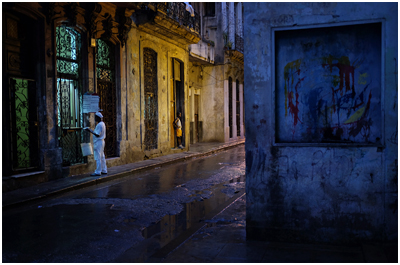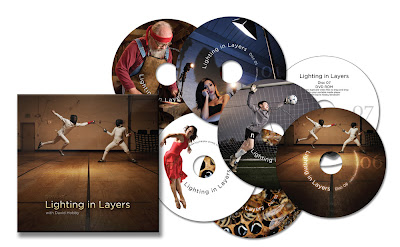
Guess what? You made it all the way through Lighting 101. This is the last lesson.
And you are probably a little stoked about your new-found skills. You might even already be playing with your starter kit. (If not, you are totally ready to.)
So I am going to suggest something to you that may sound a little strange:
It's not about flash.
Photo-graphy is, literally, writing with light. That's what we do. And you have just enough flash and lighting knowledge right now to be pretty dangerous. Because your photos are going to look better, more polished, more professional, etc.
But don't make your your photography all about off-camera flash — or even all about light. It's also about content and moment and emotion and gesture and setting and, yes, light, But the point is that it is not all about light. And certainly, it's not all about flash.
I say this because since starting Strobist in 2006 I have seen literally thousands of talented (and otherwise perfectly normal) photographers become infatuated with their newfound lighting skills to the point where all they thought about was the light.
So off-camera flash is all they are paying attention to. Which is not good.
Lighting is a tool. And you are learning how to use it. At this point, you already have more education and training than the average photographer. And that's great.
But it is important to make your lighting knowledge light additive to your previous existence as a photographer and not a substitute for all of those other cool skills you used to bring to the table.
In other words, use your new and growing skills to nurture your own existing skills as a photographer. Don't let lighting take over and subsume your creative vision.
The very last thing I want to do is to kill that individuality you had before you got here. Just let lighting make it better.
__________
Also, take time to just look at light. I mean real, ambient light. Daylight. Industrial light. Blue hour light. Golden hour light. All kinds of light. Discover it. Study it. Wallow in it. And make sure you keep shooting with natural light, too.
The photo at the top of this page, taken on my first night in Havana, is natural light. But I saw (and continue to see) it differently because I am a lighting photographer. There's a base-fill of blue-hour evening light, a couple of stops down. And the unseen hidden street light (at upper back right if that wall wasn't there) is very warm. And it's dominant over the blue — as far as it reaches anyway.
The the fluorescents coming from inside the building at left are just as rich and green as you'd expect fluorescents to be. And if you were creating this light (which you'll soon be able to do with a little practice) hopefully you'd have the sense and good grace not to "fix" those fluorescent lights. The green is beautiful in this context.
The palette in this picture works because it could literally be a painter's palette — some blue paint, some yellow, and a section of the two mixed together to make a goopy green.
And that's the point of observing and respecting and discovering beautiful light. Because any light you can see, or imagine, or remember can be created (or re-created) with flash. And that's freakin' awesome.
__________
One Last Thing...
Only one in ten people who start Lighting 101 actually finishes it. So good for you for sticking with it. And your persistence earns a little-known perk.
In 2011 I produced a 6(+1) DVD set entitled Lighting in Layers, currently in its 6th printing:

It's an immersive ride-along on several shoots of varying levels of difficulty and all lit with small flash. The DVDs are not for total beginners. But you are not a total beginner. Having completed L101, you know enough to dive into these if you want some more detailed and visual training.
They sell for $159.99, and you can get much more info (and a preview video) here. And as an L101 grad you can purchase the hard-copy DVD set, shipped free anywhere in the world, for USD $100 instead of the regular $159.99. Just order them from Midwest Photo and use the code "L101GRAD" (no quotes, please) at checkout.
And please, don't post this discount code. It's an "attaboy" (or -girl) just for the people who made it all the way through L101.
UPDATE: August 2013: If you are a member at Lynda.com, you already have access to the videos, here!
Thank You for Reading Lighting 101
I hope you enjoyed it, and learned a lot.
You have the basics that you need to be a lighting photographer now. And I also hope you'll join us regularly now to follow and participate in the ongoing conversation we are having about light. We're nearly 2,000 posts in now, and counting. And you certainly understand enough to follow along and learn more.
New posts go up once or twice a week. You can just show up (always welcome) or subscribe via email (we'll never spam you) or follow via RSS to keep up automatically.
Thanks for reading,
David Hobby




0 comments:
Post a Comment